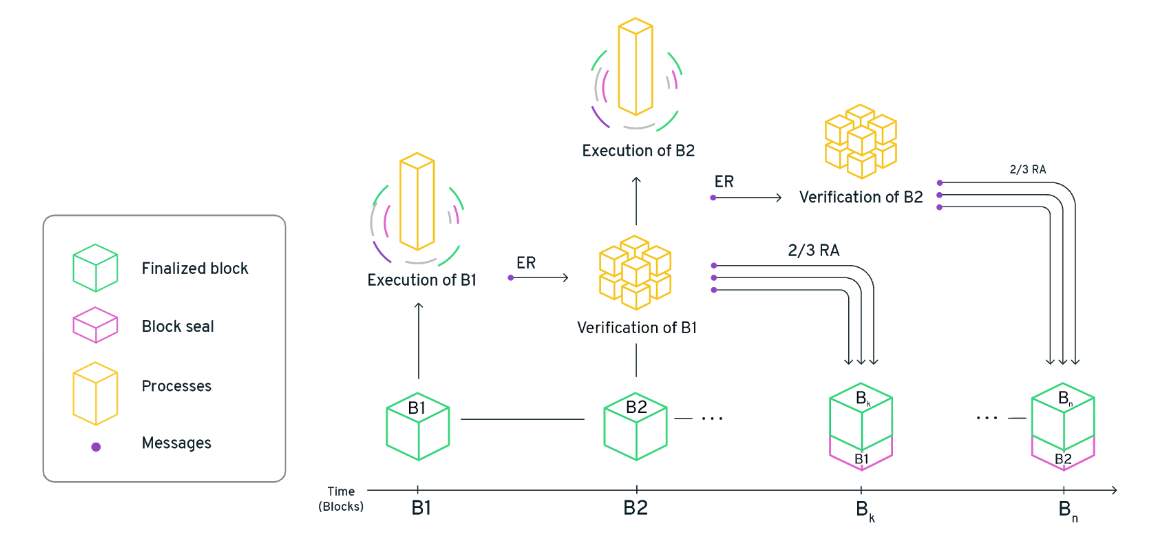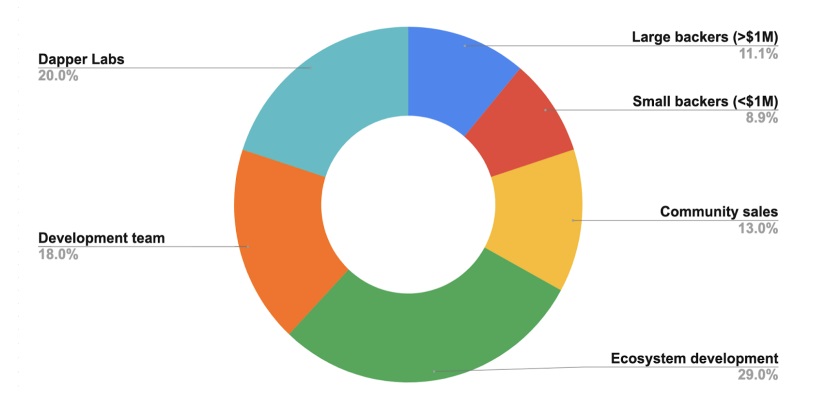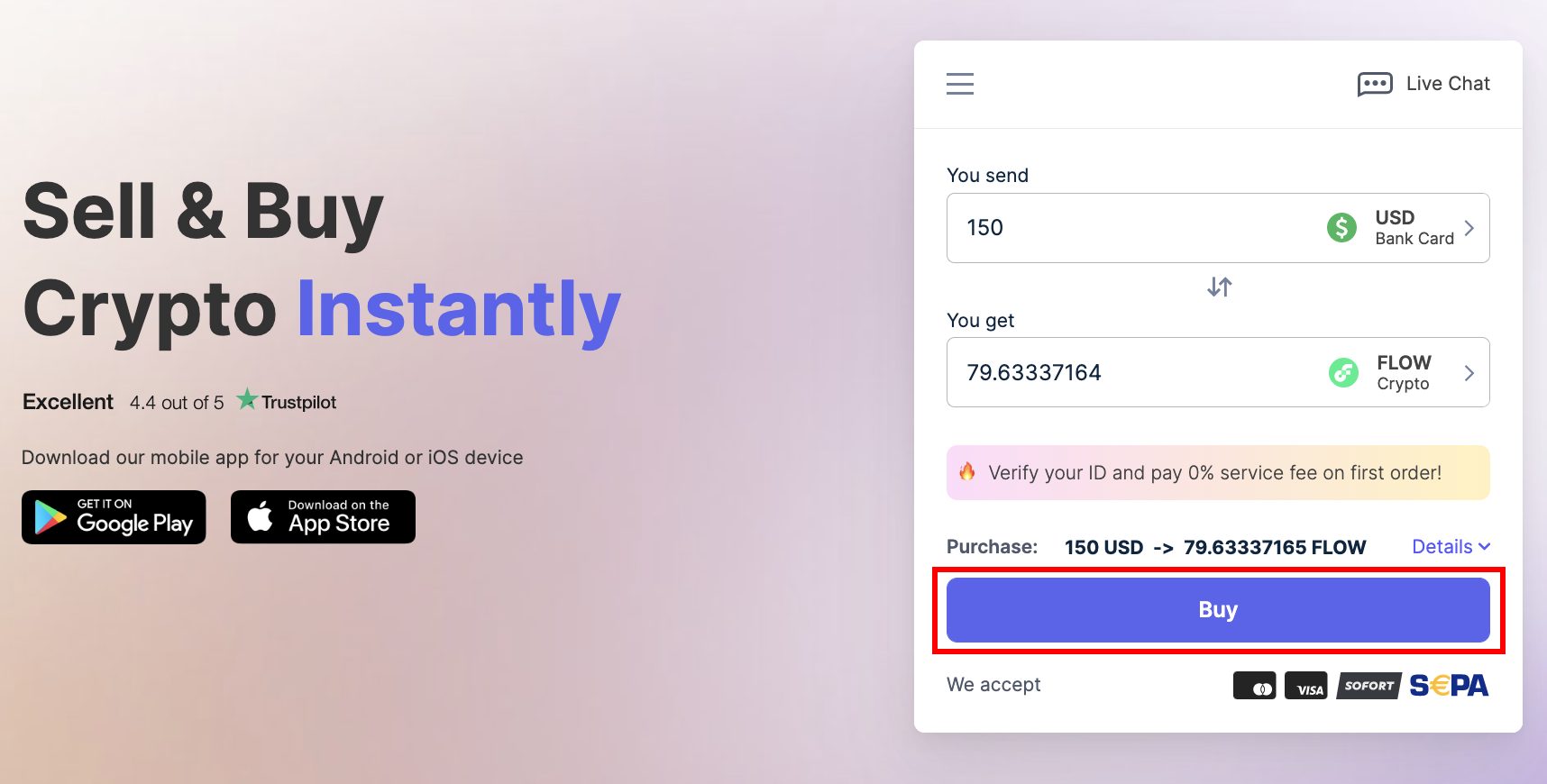Flow is a high-speed blockchain designed to provide convenience for decentralized application developers. It works without sharding but with a decent level of scalability, thanks to a multi-role architecture. This approach provides a much friendlier environment for developers and does not conflict with ACID (Atomicity, Consistency, Isolation, Durability) requirements. The blockchain was launched in the fall of 2020 by the creators of the well-known NFT game CryptoKitties.
FLOW is the native cryptocurrency that powers the Flow network. It is built on a deflationary model and has many use cases in games and financial apps. The coin is used as a payment method and accrual of rewards in the network.
Architectural Features
Most familiar blockchains store all information related to transactions and also process them. This leads to reduced scalability and reliability — one mistake can destroy the entire system. Flow applies the principle of a pipeline — all tasks are divided into four key stages:
-
- collection,
-
- consensus,
-
- execution,
-
- verification.
These tasks are then distributed among nodes in the network. Tasks are divided ‘horizontally’ with sharding and ‘vertically’ with a pipelined approach.
Thus, each node specializes in its own task, taking part in the overall process of transaction validation. Throughput thus grows thousands of times. In addition, maximum composability is ensured. That is, it is not difficult for developers to complement each other’s actions.

The Idea of Separating Computation from Consensus
Flow developers follow the principle of separating non-deterministic and deterministic processes so that each type of node works with its own type of task. Features of these processes are the following:
-
- Deterministic tasks are also called objective tasks and include computing the result of pre-ordered transactions.
-
- Non-deterministic tasks are called subjective. This is mainly the reduction of transactions to an ordered execution format.
The first type always has only one true result. The second requires a consensus mechanism. The Flow chain uses a multi-role architecture, where the work of a validator is divided into four different types of actions. Separation of responsibility gives a significant increase in optimization.
For this purpose, consensus and verification nodes are engaged in non-deterministic tasks using Proof-of-Stake (specifically, the HotStuff protocol). Their main task is to achieve network security. These nodes can optimize themselves to increase the level of reliability and decentralization. In turn, the collection and execution nodes are responsible for deterministic tasks and are controlled by other types of nodes. Such nodes can also be optimized if you need to increase the degree of security or network throughput. They are more demanding on computing equipment.
FLOW Token: Key Features to Know
The FLOW token is the main fuel for all smart contracts and apps created on the blockchain of the same name. Users and developers can use it to convey value across the network; the token can be embedded in apps to accept payments or vice versa to reward users for any actions.
FLOW staking is available — a security deposit, which ensures the confirmation of transactions and network security. This is how validator nodes work. It is possible to delegate responsibilities for maintaining a node.
The FLOW token has a limited supply of 1,368,390,492 units, which prevents inflation and increases the value in the long term.

The main functions for using the asset:
-
- Payment of transaction fees which reward validators.
-
- Exchange operations.
-
- Storage as a deposit.
-
- Collateral for secondary tokens.
-
- Share in protocol management.
FLOW opens access to dApps; as conceived by the developers, the asset will be used for actual benefits to a greater extent than for speculative transactions. In fact, of course, it will not do without speculation if the token rate favors this.
Among other things, Flow has developed several engagement programs — for example, Cloudburst Partners, which involves rewarding designers, artists, and other creators of interesting content on the Flow network. Or Floodplain Validators — this program brings together developers and other participants in the ecosystem involved in creating content and resources for the network.
Where to Buy Flow (FLOW): Switchere Exchange
If you’re wondering where to buy FLOW, you should definitely think about buying it at Switchere. On our platform, you have an opportunity to buy FLOW in the fastest and most convenient ways using any available payment method. Moreover, we offer some surprising bonuses! Users of our platform enjoy a 0% service fee for the first order.
How to buy FLOW with USD? At Switchere, you can buy crypto for fiat money or swap crypto for crypto. In addition to traditional purchases with a bank card, you can use alternative payment methods available (SEPA, SOFORT, Asian local banks).
Here is an easy step-by-step guide on buying FLOW at Switchere!
-
- Visit our website and log in to your account.
-
- Choose the currency pair for exchange as well as a payment method and enter the amount. Don’t forget to check the transaction details by clicking on ‘Details.’ Once you’ve done, click the ‘Buy’ button.

-
- Specify your Flow wallet address and click on the ‘Buy’ button.

-
- Enter your card details and click on the ‘Pay Now’ button. Please take into account that you have a limited amount of time to send your funds. Elsewise, the transaction will be canceled automatically.

-
- Once you send the funds and your transaction receives the required number of blockchain confirmations, the amount of purchased FLOW will be sent to your provided wallet address accordingly.

-
- Congratulations! The transaction is completed, and now you can check your Flow wallet.
Usually, Switchere transactions take 5-30 minutes. If you have any issues with the exchange process, let us know at [email protected].
Conclusion
The Flow blockchain was developed by Dapper Labs, which created the famous CryptoKitties in 2017. The new network turned out to be very fast and comfortable for developers of dApps. The problem of scalability is solved much more efficiently than in the case of sharding.
Blockchain has already been tested to create projects with NFTs and has also attracted many famous partners. For example, the NBA Top Shots project has become very popular, experiencing a wave of growth along with the NFT boom in the first half of 2021. The native FLOW token, in turn, showed significant growth and aroused interest from investors.

Leave a Reply